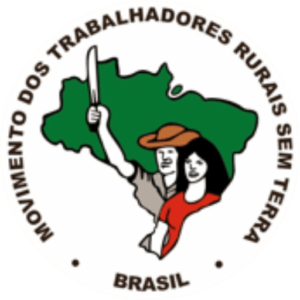Strategy discussions in organisations that we support are increasingly characterised by tensions. Where there is a struggle for the „right“ impact approach, discussions become passionate and spirited: It has often long been clear what we are against, but for what are we actually? And what exactly is needed, to achieve this?
While impact orientation was primarily a topic driven by large foundations in the 2010s, the question of social and socio-political impact is gaining new vigour with the heightened perception of the coronavirus crisis. When it's five to twelve, we should know what really changes as a result of our modest actions. And when everything clashes with everything else, we need to constantly reassure ourselves of our role and our contribution on the path to a better future - however we define it.
If we combine the lens of impact orientation with the agenda of social transformation, this opens up a view of the strategic practice of social movements - and thus also of the dilemma of their competing complementarity.
Profound social change requires change on three levels:
- On the Macro level In addition to persistent reformatory work in and on structures, change in the existing system is achieved through resistance and committed struggle against established conditions - the „street“.
- On the Meso level social niches offer space for holistic experiments to develop and test new social practices - whether in Conscious Communities, utopian „greenhouses“ or real laboratories - the „island“.
- On the Micro level spaces for personal development are needed to individually prepare and anchor social transformation in new practices and attitudes - the „monastery“.



The three approaches belong together: Changing the status quo makes no sense without tried and tested alternatives. A utopian island has no long-term value if the world around it is on fire. And a new practice that is lived out with outdated habits and attitudes will remain stuck in the old.
The interaction between niches and established systems (Regimes) is well described in the multi-level perspective (Geels, 2022). It is also obvious how development at the individual level can fertilise social development: both the struggle and engagement in social innovation spaces are boosters of personal development. And: Campaigns for systemic change need a Call to Action, that makes all actors responsible for interrupting the social reproduction of social reality.
Research on social movements confirms this demand for integrated strategies: Movements that combine all three levels bring about more sustainable transformations than those that are limited to just one level.
 The transformation led by Gandhi can be seen as a positive example of integrated transformation. Indian independence movement to consider. It is rooted in the basic attitude of Satyagraha, whose principles were developed and tested in spiritual communities (ashrams), then disseminated within the movement and finally carried persistently into the system in campaigns and actions of non-violent resistance.
The transformation led by Gandhi can be seen as a positive example of integrated transformation. Indian independence movement to consider. It is rooted in the basic attitude of Satyagraha, whose principles were developed and tested in spiritual communities (ashrams), then disseminated within the movement and finally carried persistently into the system in campaigns and actions of non-violent resistance.
 A similar interlocking can be found in the Brazilian Landless People's Movement (Movimento dos Sem Terra), which campaigns for radical land reforms. New co-operative ways of working and living are being tested in the context of land occupations. At the same time, activists are trained in training centres and oriented towards the liberation-theology and Marxist-inspired attitudes of the movement. Finally, the Movimento uses high-profile campaigns to campaign nationwide for agrarian reforms, fairer rural development and the principles of the rule of law.
A similar interlocking can be found in the Brazilian Landless People's Movement (Movimento dos Sem Terra), which campaigns for radical land reforms. New co-operative ways of working and living are being tested in the context of land occupations. At the same time, activists are trained in training centres and oriented towards the liberation-theology and Marxist-inspired attitudes of the movement. Finally, the Movimento uses high-profile campaigns to campaign nationwide for agrarian reforms, fairer rural development and the principles of the rule of law.
 The Global environmental movement combines all three levels: Protest contexts such as Fridays for Future on the street, ecovillages and regenerative communities as islands for testing new practices, and sustainability and environmental education programmes such as „The Week“ as approaches to awareness-raising and profound self-transformation (the levels are not always stringently linked: sometimes the sub-structuring of the movement is so strong that the approaches form their own attractor basins for different target groups).
The Global environmental movement combines all three levels: Protest contexts such as Fridays for Future on the street, ecovillages and regenerative communities as islands for testing new practices, and sustainability and environmental education programmes such as „The Week“ as approaches to awareness-raising and profound self-transformation (the levels are not always stringently linked: sometimes the sub-structuring of the movement is so strong that the approaches form their own attractor basins for different target groups).
In the wild the different transformation approaches repeatedly come into competition with each otherConscious communities often reject the struggle within the system as embittered self-destruction that remains focussed on the existing in its anti-attitude and, in the worst case, is corrupted by it through political compromises. Resistance movements like to view utopian projects as escapism and self-transformation as a pseudo-activist wellness programme. People who are concerned with deep transformation tend to do this, Inner Work as more important than the structural frameworks that characterise individual development.
The tensions of self-understanding mentioned at the beginning are fuelled by this competition. We often lose sight of the systemic interlocking of the three levels. Yes, strategy is the art of leaving out the non-essentials and finding a clear focus. And-but-also: Sustainable effects in complex systems require multi-layered intervention approaches.
And if we can't do everything on our own, we at least need ecosystems or collective impact partnerships in which the complementarity of the strategic levels comes into play. It is not about the alternative of protest on the street, utopia on an island or self-development in a monastery - but about their meaningful combination.



 The transformation led by Gandhi can be seen as a positive example of integrated transformation. Indian independence movement to consider. It is rooted in the basic attitude of
The transformation led by Gandhi can be seen as a positive example of integrated transformation. Indian independence movement to consider. It is rooted in the basic attitude of  A similar interlocking can be found in the Brazilian Landless People's Movement (
A similar interlocking can be found in the Brazilian Landless People's Movement ( The Global environmental movement combines all three levels: Protest contexts such as Fridays for Future on the street, ecovillages and regenerative communities as islands for testing new practices, and sustainability and environmental education programmes such as „
The Global environmental movement combines all three levels: Protest contexts such as Fridays for Future on the street, ecovillages and regenerative communities as islands for testing new practices, and sustainability and environmental education programmes such as „